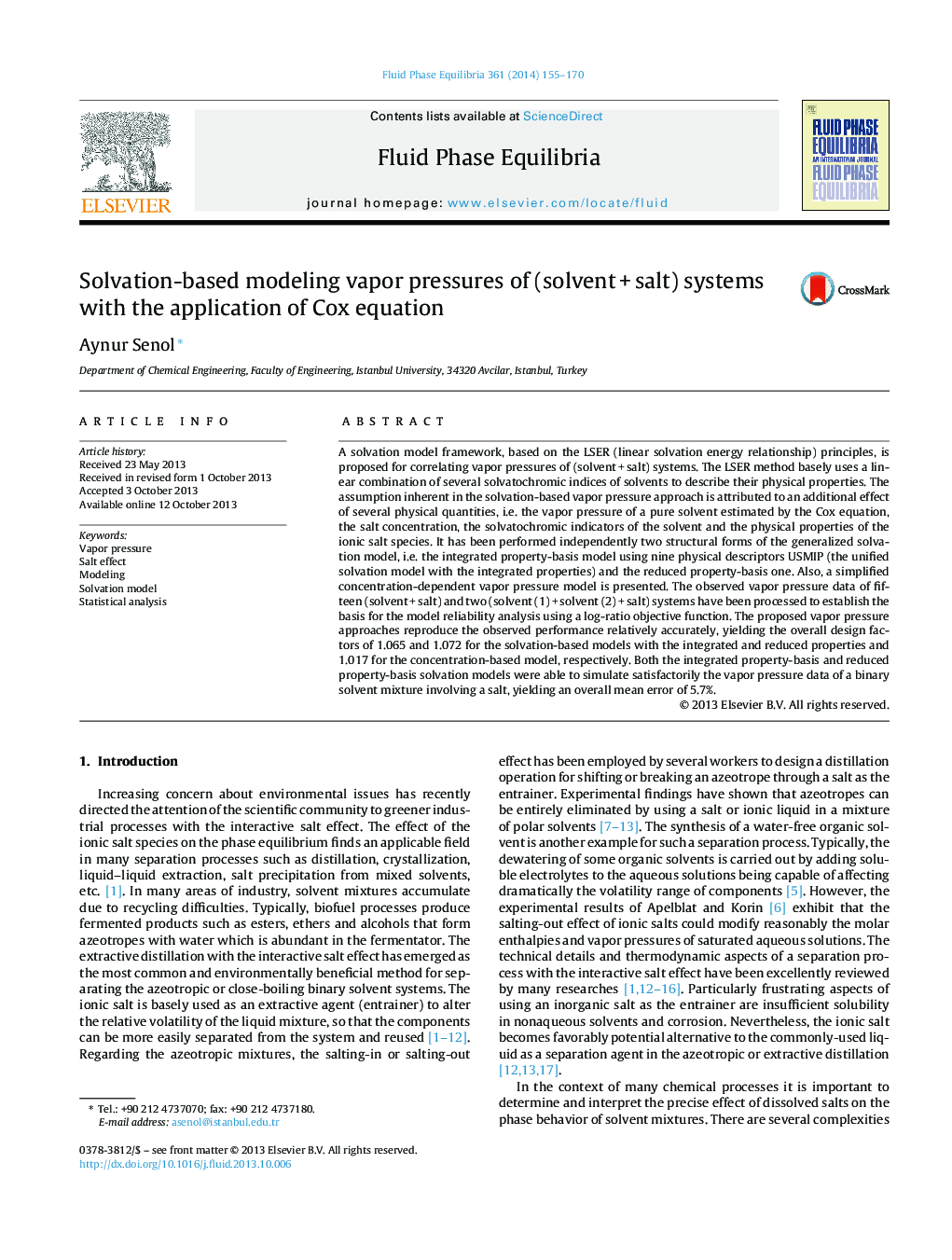| Article ID | Journal | Published Year | Pages | File Type |
|---|---|---|---|---|
| 201039 | Fluid Phase Equilibria | 2014 | 16 Pages |
•Solvation-based model is presented for correlating vapor pressures of (solvent + salt) systems depending on the Cox equation.•Two structural forms of the solvation model framework have been performed, i.e., the integrated property-basis and reduced property-basis models.•A simplified model with a third order polynomial concentration effect has also been performed.•Deviation statistics of existing models have been interpreted in terms of a mean relative error, root-mean-square deviation and log-ratio objective function.•Statistical design factors of model reliability for the solvation-based models refer to a reasonable goodness-of-fit assessing Fod very close to unity.
A solvation model framework, based on the LSER (linear solvation energy relationship) principles, is proposed for correlating vapor pressures of (solvent + salt) systems. The LSER method basely uses a linear combination of several solvatochromic indices of solvents to describe their physical properties. The assumption inherent in the solvation-based vapor pressure approach is attributed to an additional effect of several physical quantities, i.e. the vapor pressure of a pure solvent estimated by the Cox equation, the salt concentration, the solvatochromic indicators of the solvent and the physical properties of the ionic salt species. It has been performed independently two structural forms of the generalized solvation model, i.e. the integrated property-basis model using nine physical descriptors USMIP (the unified solvation model with the integrated properties) and the reduced property-basis one. Also, a simplified concentration-dependent vapor pressure model is presented. The observed vapor pressure data of fifteen (solvent + salt) and two (solvent (1) + solvent (2) + salt) systems have been processed to establish the basis for the model reliability analysis using a log-ratio objective function. The proposed vapor pressure approaches reproduce the observed performance relatively accurately, yielding the overall design factors of 1.065 and 1.072 for the solvation-based models with the integrated and reduced properties and 1.017 for the concentration-based model, respectively. Both the integrated property-basis and reduced property-basis solvation models were able to simulate satisfactorily the vapor pressure data of a binary solvent mixture involving a salt, yielding an overall mean error of 5.7%.
